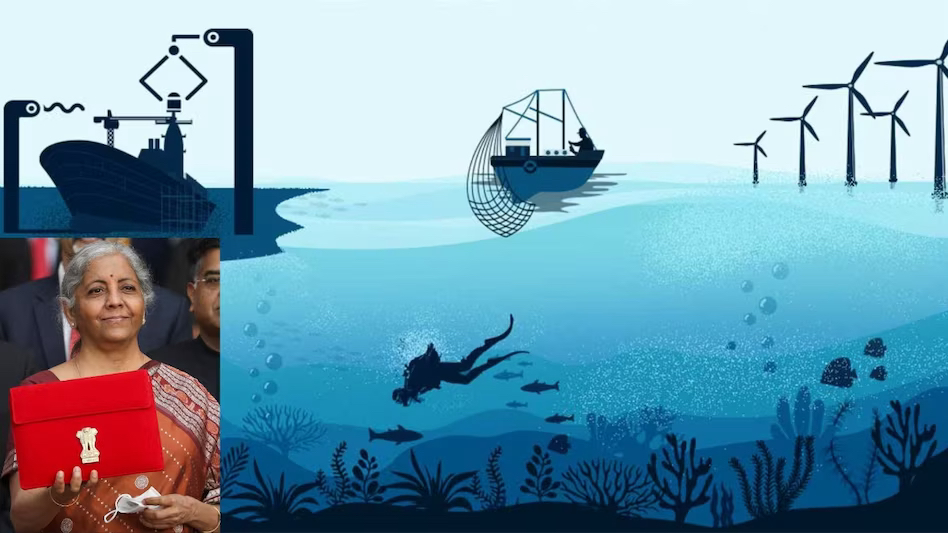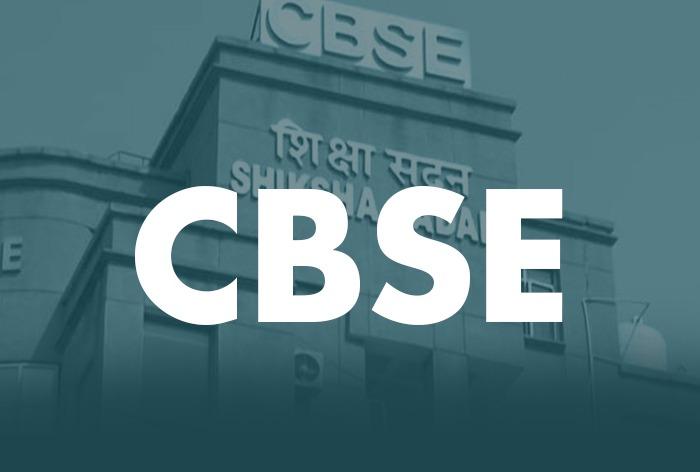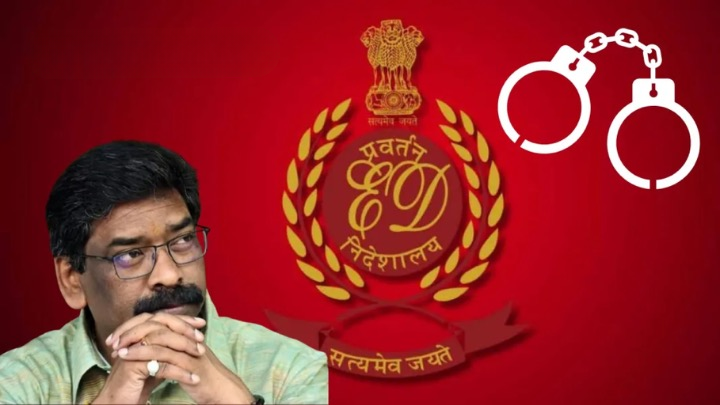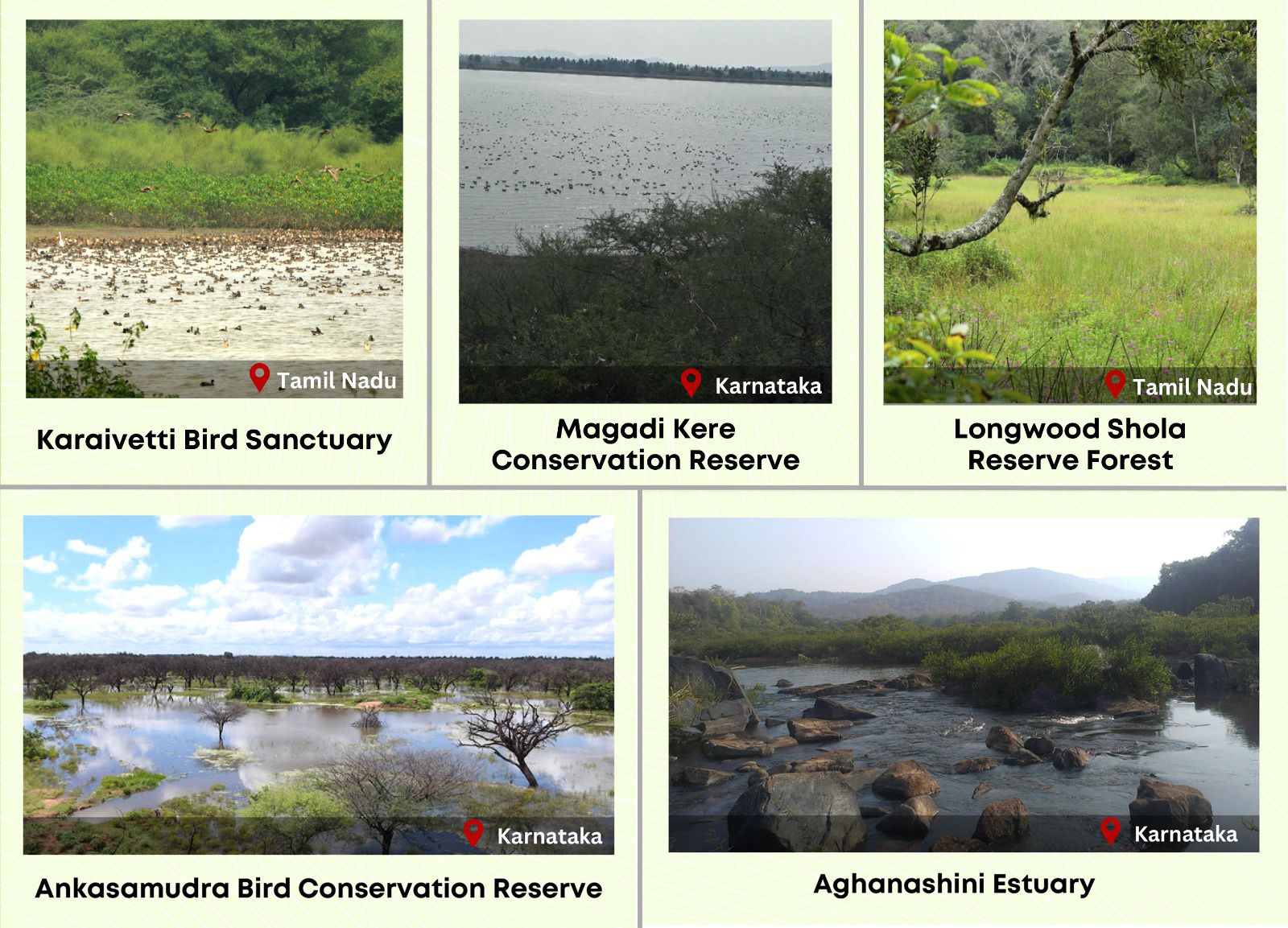RBI Action Against Paytm Payments Bank (Indian Express)

- 01 Feb 2024
Why is it in the News?
The Reserve Bank of India (RBI) recently barred Paytm Payments Bank from offering all its core services — including accounts and wallets — from March, effectively crippling the company’s business.
News Summary
- The Reserve Bank of India (RBI) has directed Paytm Payment Bank to halt accepting money in any customer account, including wallets and prepaid instruments like FASTags, from March 1.
- This action comes due to ongoing non-compliance and significant supervisory concerns highlighted by the RBI.
What Does the RBI Directive Include?
- Barred Services: Paytm Payment Bank is prohibited from offering most of its essential services.
- Account Closure: Paytm cannot accept deposits or top-ups after February 29, and nodal accounts of its parent company, One97 Communications, and Paytm Payments Services, must be terminated by February 29.
- Transaction Settlement: All pending transactions and nodal accounts initiated by February 29 must be settled by March 15.
- Customer Withdrawals: Customers are permitted to freely withdraw or use the money from their Paytm accounts, including savings and current accounts, prepaid instruments, FASTags, etc., within their available balance.
Reasons Behind the Action:
- Ongoing Scrutiny: Paytm Payment Bank has been under RBI scrutiny since 2018.
- Compliance Concerns: While specifics were not disclosed, it's believed the action stems from RBI's concerns about KYC compliance and IT-related issues.
- Data Security: RBI is cautious about safeguarding depositors' money and protecting data.
- Concerns arose when Paytm Payment Bank and its parent company lacked sufficient barriers to prevent unauthorized access to data by China-based entities with indirect stakes in the parent company.
What is a Payments Bank?
- Payment banks function similarly to traditional banks but on a smaller scale and without engaging in credit risk.
- Established based on recommendations from the Nachiket Mor Committee, their primary objective is to promote financial inclusion by providing banking and financial services to underserved areas, including migrant workers, low-income households, and small entrepreneurs.
Legal Framework and Features:
- Registered as public limited companies under the Companies Act 2013 and licensed under Section 22 of the Banking Regulation Act 1949, payments banks operate under various regulations such as the Banking Regulation Act 1949, RBI Act 1934, and Foreign Exchange Management Act 1999.
Key features include:
- Differentiation: Payments banks are distinct from universal banks and operate on a smaller scale.
- Capital Requirement: The minimum paid-up equity capital for payment banks is set at 100 crores, with promoters required to contribute at least 40% during the first five years of operation.
- Permissible Activities: Payments banks can accept deposits up to Rs. 2,00,000, invest in government securities to meet statutory liquidity requirements and provide various banking services such as remittance, mobile payments, ATM/debit cards, and net banking.
- Additionally, they can serve as banking correspondents for other banks.
- Limitations: Payments banks are restricted from issuing loans and credit cards, accepting time deposits or NRI deposits, and establishing subsidiaries for non-banking financial activities.
Blue Economy 2.0 (Indian Express)

- 01 Feb 2024
Why is it in the News?
The Interim Budget presented by Finance Minister Nirmala Sitharaman on (February 1) stressed environment-friendly development through the promotion of a ‘blue economy’.
What are the Proposals in the Interim Budget Regarding the Blue Economy?
- Finance Minister Nirmala Sitharaman announced plans to launch a scheme focusing on restoration, adaptation measures, coastal aquaculture, and mariculture, adopting an integrated and multi-sectoral approach.
- Restoration and adaptation measures aim to preserve ocean health during economic activities, while aquaculture involves farming aquatic plants and animals, and mariculture focuses on rearing marine creatures in saltwater.
- Additionally, five integrated aqua parks will be established, and the Pradhan Mantri Matsya Sampada Yojana (PMMSY) will be strengthened to increase aquaculture productivity, double exports to Rs 1 lakh crore, and create 55 lakh employment opportunities in the near future.
What is the Blue Economy?
- While the term blue economy can simply refer to economic activities related to the sea and the coasts, it is generally understood to have an element of sustainability in it.
- Thus, the European Commission defines it as “all economic activities related to oceans, seas and coasts.
- It covers a wide range of interlinked established and emerging sectors”; the World Bank says the blue economy is the “sustainable use of ocean resources for economic growth, improved livelihoods, and jobs while preserving the health of ocean ecosystems.”
- For a country like India, with a long coastline, diversity in terms of fish and other ocean produce, and multiple tourism opportunities, the blue economy is highly significant.
Does India Have a Blue Economy Policy?
- The blue economy 2.0. a draft policy framework on India’s Blue Economy was first released in July 2022.
- The policy document contained “key recommendations on National Accounting Framework for Blue Economy and Ocean Governance, Coastal Marine Spatial Planning and Tourism Priority, Marine Fisheries, Aquaculture and Fish Processing.
- Manufacturing, Emerging Industries, Trade, Technology, Services and Skill Development, Logistics, Infrastructure and Shipping, Coastal and Deep-Sea Mining and Offshore Energy and Security, Strategic Dimensions and International Engagement.”
- When the G20 summit was hosted in New Delhi under India’s presidency, the Comptroller & Auditor General of India (CAG) chaired the Engagement Group for Supreme Audit Institutions (SAls) of the member countries in June 2023. Two priorities for the SAI20 deliberations were blue economy and responsible Artificial Intelligence.
CBSE Proposes New Plan For Class 10 & 12 (Indian Express)

- 01 Feb 2024
Why is it in the News?
CBSE is reported to have proposed significant changes to the academic framework for secondary and higher secondary education, including a shift from studying two languages to three in Class 10, with the requirement that at least two must be native Indian languages.
Key Highlights of the Proposal:
Proposed Changes for Class 10:
- Transition from studying two languages to three, with a stipulation that at least two must be native Indian languages.
- Potential requirement for students to pass in 10 subjects, contrasting with the current mandate of five.
Proposed Changes for Class 12:
- Shift to studying two languages instead of one, with the condition that at least one must be a native Indian language.
- Introduction of a necessity to clear examinations in six subjects for high school graduation, up from the existing requirement of five.
The objective behind the Proposed Changes:
- These modifications are part of CBSE's broader initiative to implement a national credit framework in school education, addressing the absence of a formalized credit system in the standard curriculum.
Academic Year and National Learning Hours:
- According to the CBSE plan, an academic year will comprise 1200 notional learning hours, equivalent to earning 40 credits.
- Notional learning denotes the specified time required for an average student to achieve set outcomes.
- This encompasses both academic learning at school and non-academic or experiential learning outside of it.
Storage of Earned Credits:
- The scheme of studies has been adjusted to outline teaching hours and credits earned for each subject.
- These earned credits will be digitally stored in the Academic Bank of Credits, accessible through a linked Digilocker account.
What is the National Credit Framework (NCrF)?
- The draft NCrF was introduced by the Union Ministry of Education (MoE) in 2022, based on recommendations from an inter-ministerial committee.
- It serves as a guideline for schools, colleges, and universities to adopt the credit system, marking the inclusion of the entire school education system under its purview.
- Previously, only the National Institute of Open Schooling (NIOS) followed a credit system, but the NCrF extended its coverage to include skill and vocational education.
Proposed Benefits of NCrF for Various Stakeholders:
- Students:
- Facilitates multidisciplinary education with flexible curricula.
- Eliminates distinctions between different streams like arts, science, social sciences, and commerce.
- Rewards students with credits for academic, skill, and experiential learning.
- Expands core learning to encompass both foundational and cognitive aspects.
- Institutions:
- Fosters collaboration between institutions.
- Simplifies and standardizes credit mechanisms.
- Emphasizes research and innovation.
- Utilizes institutional infrastructure efficiently.
- Government:
- Expected to increase student enrollment rates.
- Complements India's demographic dividend, aiming to become the Skill Capital of the World.
- Industry:
- Enables students to acquire NSQF-approved foundational skills from the industry, enhancing employability.
- Allows for quick educational upgradation and up-skilling through micro-credentials.
Significance of NCrF:
- Aligns with the vision of the National Education Policy (NEP) 2020 by integrating academic and vocational domains for flexibility and mobility.
- Facilitates re-entry into the education system for students who have dropped out.
- Promotes Recognition of Prior Learning, acknowledging skills acquired informally through various means.
Enforcement Directorate (ED) Arrests Jharkhand CM in a Corruption Case (Indian Express)

- 01 Feb 2024
Why is it in the News?
Recently Jharkhand CM Hemant Soren was arrested by the officials of the Enforcement Directorate (ED) in the land scam case.
News Summary:
- Jharkhand CM Hemant Soren became the third state chief minister to be arrested after the Enforcement Directorate took him into custody in a money laundering case.
- Before Hemant Soren, his father Shibu Soren and Madhu Koda were arrested.
- He was arrested in a case related to an illegal change of ownership of land in Jharkhand.
What is the Enforcement Directorate (ED)?
- The Enforcement Directorate (ED) is a multi-disciplinary agency tasked with investigating money laundering offenses and violations of foreign exchange laws.
- It operates under the Department of Revenue within the Ministry of Finance and upholds strict compliance with the Constitution and laws of India.
Structure:
- Headquarters: Located in New Delhi, the ED is headed by the Director of Enforcement.
- Regional Offices: The agency has five regional offices situated in Mumbai, Chennai, Chandigarh, Kolkata, and Delhi, each overseen by Special Directors of Enforcement.
- Recruitment: Officers are recruited directly and transferred from other investigative agencies, comprising personnel from the Indian Revenue Services (IRS), Indian Police Services (IPS), and Indian Administrative Services (IAS), including roles such as Income Tax officers, Excise officers, Customs officers, and police officials.
- Tenure: Typically, officers serve a two-year term, extendable to five years with three annual extensions.
- Amendments to the Delhi Special Police Establishment (DSPE) Act, 1946, and the Central Vigilance Commission (CVC) Act, 2003, enable the government to extend the tenure of directors for one year after completing their initial two-year terms.
Functions:
- COFEPOSA: Empowered by the Conservation of Foreign Exchange and Prevention of Smuggling Activities Act, 1974 (COFEPOSA), the ED can initiate cases of preventive detention related to violations of the Foreign Exchange Management Act (FEMA).
- Foreign Exchange Management Act, 1999 (FEMA): This civil law aims to regulate external trade and payments, with the ED responsible for investigating suspected contraventions, adjudicating cases, and imposing penalties.
- Prevention of Money Laundering Act, 2002 (PMLA): Enacted to combat money laundering, the ED is tasked with tracing assets derived from crime proceeds, attaching property, and prosecuting offenders through Special Courts.
- Fugitive Economic Offenders Act, 2018 (FEOA): Introduced to address economic offenders seeking refuge abroad, the ED enforces this law by attaching properties of fugitives and confiscating assets, thereby deterring offenders from evading Indian law.
5 Wetlands Added to The Global List of Wetlands of International Importance under Ramsar Convention (TOI)

- 01 Feb 2024
Why is it in the News?
Ahead of World Wetlands Day, five more wetlands in India got the tag of international importance under the Ramsar Convention, making it the fourth largest country in terms of the number of sites on the list.
About the New Ramsar sites:
- The five newly added Indian sites in the list are Karaivetti Bird Sanctuary and Longwood Shola Reserve Forest in Tamil Nadu, and Magadi Kere Conservation Reserve, Ankasamudra Bird Conservation Reserve and Aghanashini Estuary in Karnataka.
- In India, Tamil Nadu continues to have the maximum number of Ramsar sites (16) followed by Uttar Pradesh (10).
- Karaivetti Bird Sanctuary (Tamil Nadu): Karaivetti Bird Sanctuary is one of the largest inland wetlands of Tamil Nadu and is a significant source of groundwater recharge for the area.
- Water from the wetland is utilized by the villagers for cultivating crops such as paddy, sugar cane, cotton, corn, and split red gram.
- Karaivetti has one of the largest congregations of waterbirds in the State of Tamil Nadu.
- The Longwood Shola Reserve Forest (Tamil Nadu): The Longwood Shola Reserve Forest derives its name from the Tamil word, "Solai", which means ‘tropical rainforest’.
- The ‘Sholas’ are found in the upper reaches of the Nilgiris, Anamalais, Palni hills, Kalakadu, Mundanthurai and Kanyakumari in Tamil Nadu.
- These forested wetlands serve as habitats for the globally endangered Black-chinned Nilgiri Laughing thrush (Strophocincla cachinnans), Nilgiri Blue Robin (Myiomela major), and vulnerable Nilgiri Wood-pigeon (Columba elphinstonii).
- As many as 14 out of 26 endemic bird species of the Western Ghats are found in these wetlands.
- Ankasamudra Bird Conservation Reserve (Karnataka): Ankasamudra Bird Conservation Reserve is a human made Village Irrigation Tank built centuries back and is spread over an area of 98.76ha.
- It is an ecologically important wetland, rich in biodiversity, comprising over 210 species of plants, mammal species, reptiles, birds etc.
- It supports more than 1% of the biogeographic population of Painted Stork and Black-headed Ibis.
- Aghanashini Estuary (Karnataka): Aghanashini Estuary is formed at the confluence of the Aghanashini River with the Arabian Sea.
- The brackish water of the Estuary provides diverse ecosystem services including flood and erosion risk mitigation, biodiversity conservation and livelihood support.
- The wetland also provides livelihoods to families by supporting fishing, agriculture, collection of edible bivalves and crabs, shrimp aquaculture, traditional fish farming in the estuarine rice fields (locally known as Gazni rice fields), bivalve shell collection and salt production.
- Magadi Kere Conservation Reserve (??Karnataka): Magadi Kere Conservation Reserve, is a human-made wetland with an area of nearly 50 hectares which was constructed to store rainwater for irrigation purposes.
- The wetland harbors two vulnerable species, namely the Common pochard and River tern and four near-threatened species, namely the Oriental Darter Black-headed Ibis Woolly-necked Stork and Painted Stork.
- It is also one of the largest wintering grounds for the Bar-headed goose (Anser indicus) in Southern India.
- The wetland is a designated Important Bird Area (IBA) and is also listed as a priority area for conservation in India.
What is the Ramsar Convention?
- The Ramsar Convention was signed on 2nd February 1971 to preserve the ecological character of their wetlands of international importance.
- It is named after Ramsar, the Iranian city where the treaty was signed in 1971, and places chosen for conservation under it are given the tag ‘Ramsar site’.
- The World Wetlands Day, celebrated on 2 February to raise global awareness about the importance of wetlands for human prosperity and a healthy planet.
